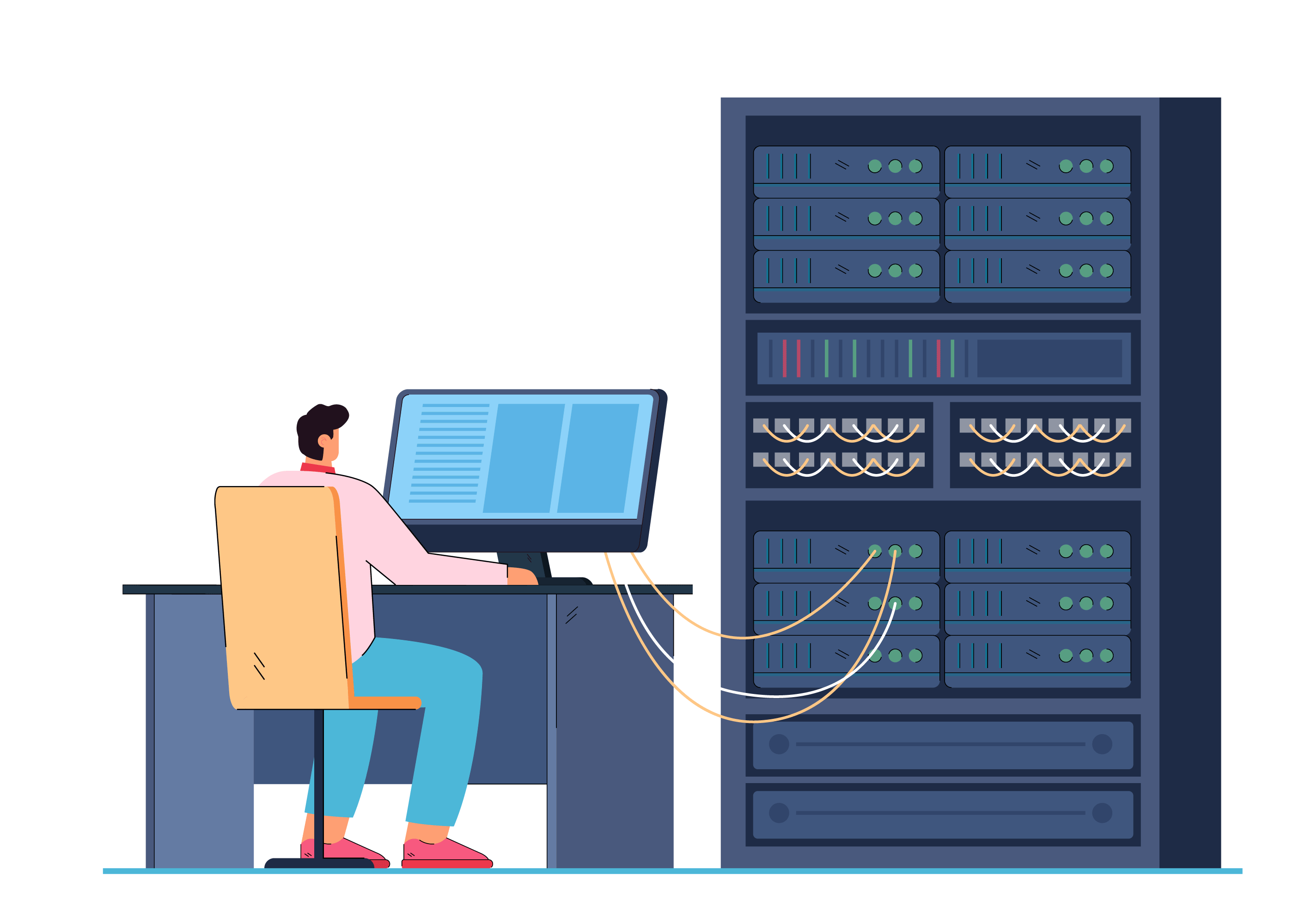
SWITCHES
A switch is a piece of hardware that facilitates switching in a network infrastructure. The switch links network components, like servers and PCs, together.
A switch makes it possible for numerous devices to use a network without interfering with each other's traffic. At a busy crossroads, the switch serves as a traffic enforcer. The switch determines which way a data packet is travelling when it arrives at one of its ports. The packet is subsequently forwarded using the appropriate port for its destination.
A switch makes it possible for numerous devices to use a network without interfering with each other's traffic. At a busy crossroads, the switch serves as a traffic enforcer. The switch determines which way a data packet is travelling when it arrives at one of its ports. The packet is subsequently forwarded using the appropriate port for its destination.
ROUTERS
Just as a switch connects multiple devices to create a network, a router connects multiple switches, and their respective networks, to form an even larger network. These networks may be in a single location or across multiple locations. When building a small business network, you will need one or more routers
Capabilities of Advanced Switches
Advanced switches today perform the functions of routers and WLAN controllers, among other network components. Such capabilities lessen the requirement for additional gear.
Additionally, switches can supply power over Ethernet (PoE) to equipment like access points, IP phones, LED lighting, security cameras, and video endpoints.
Speeds of 2.5, 5, or 10 gigabits per second or more can be offered by more sophisticated switches, such as multigigabit switches.
Programmable switches may also have sophisticated capabilities that network teams can centrally manage via a programmatic interface, such as rate limitation, status monitoring, and security.

Types of Switches
01Unmanaged switches
Unmanaged switches have minimal capacity and just basic connectivity. They can be configured to work without having to be customized in any way because they are simply "plug and play" devices. Small networks without strict security or availability requirements frequently employ unmanaged switches.
02Managed switches
Networking experts need to configure managed switches, which are designed for use in large, complex networks that demand reliability and security. These switches offer more capacity than unmanaged switches and provide more operational flexibility and control. Managed switches also can provide network analytics, simplify management, and deploy software updates through automation.
03Fixed switches
There are 8, 12, 24, or 48 downlink ports on fixed switches. Each downlink port can power the devices by connecting them to a fixed switch. Uplink ports are frequently modular, allowing for the exchange of network modules to increase the switch's overall throughput. Ports can be connected using copper cables for PoE or fiber cables for increased throughput. Fixed switches are also stackable.
04Modular switches
Compared to fixed switches, modular switches offer greater flexibility because they can be customized. These switches frequently include 4, 7, or 10 slots for line cards, each of which can carry a different number and kind of ports. The switches can be set up by networking professionals to support the networking requirements of a business.




How do Switches differ from Router?
Using MAC addresses to determine where to send data packets, a switch connects the devices in a LAN (local-area network). A router links LANs to other local area networks and/or the internet. IP addresses are used by routers to route data packets.










